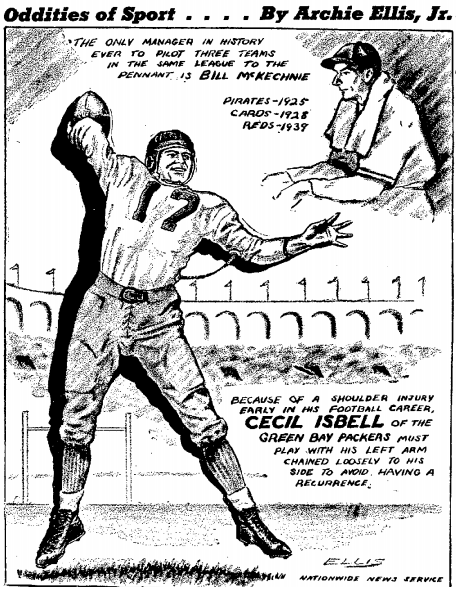Much was made during the offseason about the running back’s diminished importance in today’s pass-first offenses. For the second year in a row — an NFL first — no runner was taken in Round 1 of the draft. So I thought I’d work up some charts that showed exactly why.
As you can see below, 10 of the 14 Super Bowl winners in the 2000s have had a quarterback who ranked in the Top 10 in the league in passer rating, but only three have had a back that ranked in the Top 10 in rushing (one of them being the Seahawks’ Marshawn Lynch last year).
For that matter, just four of the champs had a Top 10 receiver, and five of them (including Seattle) didn’t even have a 1,000-yard guy. It’s more about Spreading the Ball Around now. (So how come nobody’s talking about the Incredible Shrinking Wideout?)
It wasn’t like this in the early years of the free agency (1993-99). Elite runners and elite receivers were very much a part of winning titles. Five of the seven championship clubs had Top 10 rushers and just as many had Top 10 pass-catchers. The specifics:
[table]
Year,Champion,QB\, Rating (Rank),Top Rusher\, Yds (Rank),Top Receiver\, Yds (Rank)
2013,Seahawks,Russell Wilson\, 101.2 (7),Marshawn Lynch\, 1\,257 (6),Golden Tate\, 898 (31)
2012,Ravens,Joe Flacco\, 87.7 (14),Ray Rice\, 1\,143 (11),Anquan Boldin\, 921 (27)
2011,Giants,Eli Manning\, 92.9 (7),Ahmad Bradshaw\, 659 (29),Victor Cruz\, 1\,536 (3)
2010,Packers,Aaron Rodgers\, 101.2 (3),Brandon Jackson\, 703 (33),Greg Jennings\, 1\,265 (4)
2009,Saints,Drew Brees\, 109.6 (1),Pierre Thomas\, 793 (T24),Marques Colston\, 1\,074 (18)
2008,Steelers,B.Roethlisberger\, 80.1 (24),Willie Parker\, 791 (26),Hines Ward\, 1\,043 (15)
2007,Giants,Eli Manning\, 73.9 (25),B. Jacobs\, 1\,009 (T15),Plaxico Burress\, 1\,025 (21)
2006,Colts,P. Manning\, 101.0 (1),Joseph Addai\, 1\,081 (18),Marvin Harrison\, 1\,366 (2)
2005,Steelers,B.Roethlisberger\, 98.6 (3),Willie Parker\, 1\,202 (12),Hines Ward\, 975 (22)
2004,Patriots,Tom Brady\, 92.9 (9),Corey Dillon\, 1\,635 (3),David Givens\, 874 (32)
2003,Patriots,Tom Brady\, 85.9 (10),Antowain Smith\, 642 (30),Deion Branch\, 803 (32)
2002,Bucs,Brad Johnson\, 92.9 (3),Michael Pittman\, 718 (32),K. Johnson\, 1\,088 (16)
2001,Patriots,Tom Brady\, 86.5 (6),Antowain Smith\, 1\,157 (12),Troy Brown\, 1\,199 (10)
2000,Ravens,Trent Dilfer\, 76.6 (21),Jamal Lewis\, 1\,364 (7), Shannon Sharpe\, 810 (32)
[/table]
Now look at the 1993-to-1999 period:
[table]
Year,Champion,QB\, Rating (Rank),Top Rusher\, Yards (Rank),Top Receiver\, Yards (Rank)
1999,Rams,Kurt Warner\, 109.2 (1),Marshall Faulk\, 1\,381 (5),Isaac Bruce\, 1\,165 (12)
1998,Broncos,John Elway\, 93.0 (5),Terrell Davis\, 2\,008 (1),Rod Smith\, 1\,222 (4)
1997,Broncos,John Elway\, 87.5 (7),Terrell Davis\, 1\,750 (2),Rod Smith\, 1\,180 (T8)
1996,Packers,Brett Favre\, 95.8 (2),Edgar Bennett\, 899 (14),Antonio Freeman\, 933 (24)
1995,Cowboys,Troy Aikman\, 93.6 (3),Emmitt Smith\, 1\,773 (1),Michael Irvin\, 1\,603 (4)
1994,49ers,Steve Young\, 112.8 (1),Ricky Watters\, 877 (15),Jerry Rice\, 1\,499 (1)
1993,Cowboys,Troy Aikman\, 99.0 (2),Emmitt Smith\, 1\,486 (1),Michael Irvin\, 1\,330 (2)
[/table]
This gives us the following breakdown:
[table width=”400px”]
Period (Seasons),Top 10 QBs,Top 10 RBs,Top 10 Receivers
2000-13 (14),10,3,4
1993-99 (7),7,5,5
[/table]
Another indication of the position’s decline: None of the Top 10 postseasons by a Super Bowl-winning running back have come in this century. The party pretty much ended with the Broncos’ Terrell Davis in 1997 and ’98.
[table]
Year,RB\, Team,Games,Yards,Per Game
1998,Terrell Davis\, Broncos,3,468,156.0
1983,Marcus Allen\, Raiders,3,466,155.3
1982,John Riggins\, Redskins,4,610,152.5
1997,Terrell Davis\, Broncos,4,581,145.3
1974,Franco Harris\, Steelers,3,343,114.3
1987,Timmy Smith\, Redskins,3,342,114.0
1992,Emmitt Smith\, Cowboys,3,336,112.0
1973,Larry Csonka\, Dolphins,3,333,111.0
1975,Franco Harris\, Steelers,3,314,104.7
1986,Joe Morris\, Giants,3,313,104.3
[/table]
Top three postseasons by running backs on Super Bowl losers: Thurman Thomas with the 1990 Bills (3/309/130), Frank Gore with the 2012 49ers (3/319/106.3) and Marshall Faulk with the 2001 Rams (3/317/105.7).
Sources: pro-football-reference.com, nfl.com

